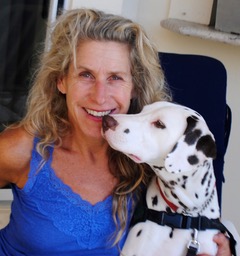Takeaway
Pets hold a special place in all of our hearts. To connect with patients and to show genuine interest, ask them about their pets. You may be surprised how much you will learn about your patient including who they are, what matters to them, and what they love.

Lifelong Learning in Clinical Excellence | March 6, 2019 | 1 min read
By Stephanie Cooper Greenberg, Johns Hopkins Pet Therapy Program
Hanging in the Johns Hopkins University portrait archives are paintings of the legends of medicine – Osler, Halstead, Welch, Taussig, and also Anna the Dog, the only canine in the collection, a sweet terrier, whose portrait was painted in 1951.
Anna lived in the laboratory of acclaimed laboratory technician Vivien Thomas and cardiac surgeon Alfred Blalock. Pediatric cardiologist Helen Taussig had conceived a method for the surgical correction of “blue baby syndrome,” a heart defect that was fatal to children. Back then, animals were used in the laboratory to perfect experiments and procedures, leading to new surgical techniques. Anna, a trusted canine colleague, contributed greatly to the success of this surgical breakthrough.
A beloved mascot
In the 1940s, Anna retired to the surgical research laboratories at Johns Hopkins where she became the lab mascot and well-loved pet of the staff. Anna charmed everyone who came to visit. Her canine portrait stands out along side her vaunted human colleagues; Anna made history, and her portrait, which always elicits a smile, helps us remember her.
Therapy dogs
These days, you will find far fewer – if any – dogs in the laboratory, but you may find dogs walking the hospital hallways visiting patients, being therapy dogs. While we no longer commission oil paintings of our working dogs, we do, as therapy dog teams, often leave behind our dog’s business cards – a sweet photo with a wish to get well in the hope of warming a heart.
Ask your patient about their pet
Pets hold a special place in all of our hearts. To connect with patients and to show genuine interest, ask them about their pets. You may be surprised how much you will learn about your patient including who they are, what matters to them, and what they love.
Anna was so important to both the history of medicine and to the people around her. We owe her a debt of gratitude for the discoveries she helped make possible, and to our canine colleagues – our therapy dogs – for the work they do “on the job” each and every day, charming us, making us smile, and leaving behind small calling cards for the soul.

